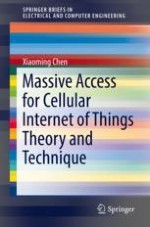2019 | OriginalPaper | Chapter
4. Massive Access with Channel Reciprocity
Author : Xiaoming Chen
Published in: Massive Access for Cellular Internet of Things Theory and Technique
Publisher: Springer Singapore
Activate our intelligent search to find suitable subject content or patents.
Select sections of text to find matching patents with Artificial Intelligence. powered by
Select sections of text to find additional relevant content using AI-assisted search. powered by
